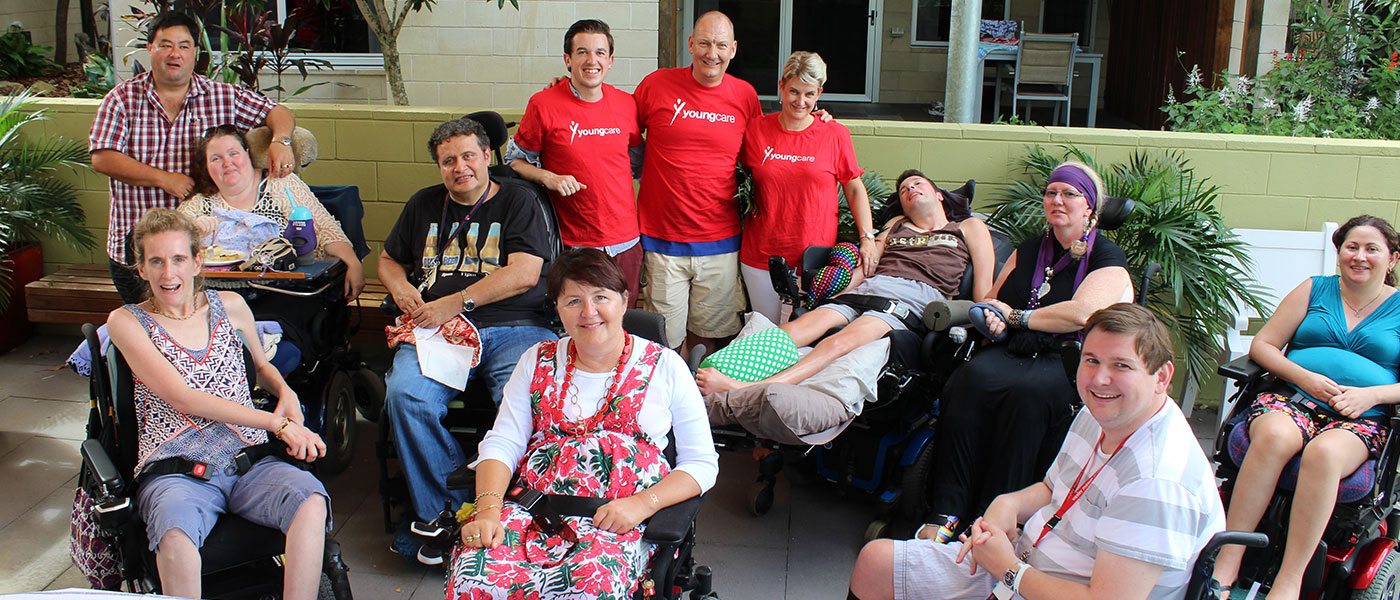28 October 2015
This article was originally published in the October 2015 issue of The Health Advocate.
Care in the community
Youngcare CEO, Samantha Kennerley, discusses how we can do better to support young people in residential care.
The report from the recent Senate Committee inquiry into residential care for young Australians with disabilities, released this June, charts a clear path for us to solve a decade-old injustice. Young people caught living in aged care — where the average age of residents is 83 years — is an issue that has dogged the healthcare system for many years. Now is the time for Commonwealth, state and territory governments to step up and fulfil the mission that Youngcare and its supporters have been championing for the last 10 years: to help transition young people out of nursing homes and into age-appropriate housing, where they have options and independence. Youngcare’s own experience in this area has led us to develop a unique model of care — based on the actual needs and wants of young people with high care needs — that has set the standard for accommodation providers internationally.
Our new blueprint for the development of communities that are accessible and inclusive for people of all ages and abilities is a ground-breaking tool for decision makers, planners, governments and investors. It includes a housing design guide — built on years of research in union with Griffith University — which demonstrates how to provide young people with a home — in any community, in any location — that ensures their complex support needs are met, while also allowing them to lead a fulfilling, productive life. This may be as simple as enabling them to pop down the street to a local café or have friends visit for a dinner party.
Youngcare also provides direct support for young people who want to remain at home or move out of residential aged care, hospital or some other long-term health facility. While we are continuing to make great strides in helping as many young people living in, or at risk of entering aged care, we, as a nation, need to be looking towards a whole-of-care approach. The recent Senate Committee inquiry’s recommendations and the roll out of the
National Disability Insurance Scheme (NDIS) have both presented great opportunities for improving the outlook for people living with disabilities, but we need to do more.
In the short term, young people in aged care will need access to state and territory aids and equipment schemes. Presently, young people in aged care are unable to access state-funded schemes because they are actually funded through the federal aged care system. This creates an even heavier cost burden onto families which is unfair and limits the options available. The requirements of state-funded schemes also vary around the country, so a more uniform approach is needed. Another avenue for reform would be to remove the requirement of bonded fees for young people with high care needs and providing appropriate prescribed specialist services like speech, physiotherapy, occupational therapy and other allied health services.
In the longer term, we must address the issue of how funds are allocated for all areas relating to young people in care, from the previously mentioned health care tools and services to bigger issues such as age-appropriate housing. It is not always correct to assume that money is the reason why young people are ending up in aged care.
There are many young people with permanent disabilities who are residing in hospitals and rehabilitation units because there is nowhere suitable for them to go and their families have resisted pressure to send their loved ones into the aged care system.
A comparison of the costs of hospital care to disability care, either at home or in supported accommodation, is striking. The cost of daily care in an Australian hospital can be as high as $2,195, which equates to $801,175 annually. Considering the maximum allowance for high care needs in the NDIS budget is $606 per day, equating to $221,540 per year, there is no apparent reason why a lack of funding should be the key issue for providing appropriate care for young people. It is more accurate to suggest that the distribution of funding between government departments is misaligned and needs to be reviewed.
A future where no young Australian has to call aged care “home” is feasible within our lifetime. For it to become a reality, we must adopt a collaborative approach and view it as our community responsibility.
Keep up to date with Samantha Kennerley on Twitter.














